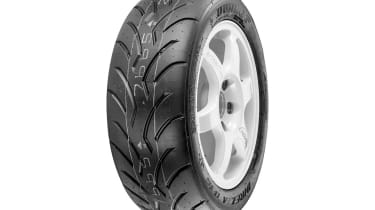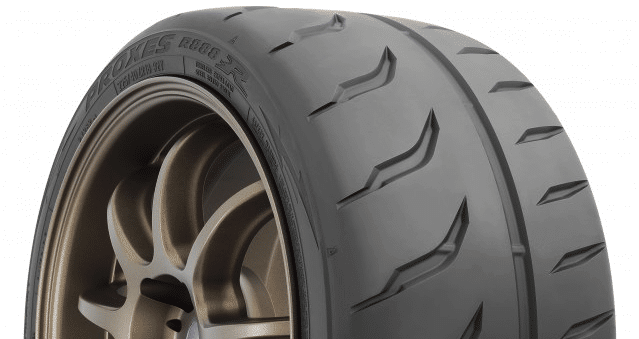All Categories
Featured
Table of Contents
The Michelin supplied a comfortable driving experience, qualified by receptive guiding and a modern understeer equilibrium. Regardless of the cooler testing problems, Michelin's constant time and hold over three laps suggests its suitability for real-world applications. On the other hand, Yokohama's efficiency was unique. While its super-quick guiding led to a quick front axle turn, the back revealed a tendency to turn much more.
The tyre's initial lap was a 2nd slower than the 2nd, aiming to a temperature-related hold increase. For daily use, the Michelin might be a safer bet.
Trusted Tyre Safety Near Me – Beechboro
It shared Michelin's safe understeer balance but lacked the latter's readiness to turn. Continental and Goodyear's performances were remarkable, with Continental's new PremiumContact 7 revealing a considerable renovation in wet problems contrasted to its precursor, the PC6. This version was far less delicate to fill modifications and behaved similar to the Michelin, albeit with somewhat less interaction at the limit.
It integrated the safe understeer equilibrium of the Michelin and Continental with some flashy handling, verifying both predictable and quick. As an all-rounder for this Golf GTI, Goodyear's Crooked array was the standout, demonstrating excellent efficiency in the damp. Finally, the Bridgestone Potenza Sporting activity took the crown as the fastest tire, albeit by a little margin.
Motorists seeking an amazing wet drive could find this tyre worth taking into consideration. The standout performer in wet braking was the newest tire on examination, the PremiumContact 7, though the results are nuanced.
Tyre Fitting – Beechboro
Ideally, we wanted the cold temperature level test to be at around 5-7C, however logistical hold-ups meant we checked with an average air temperature level of 8C and water at 12C. While this was cooler than standard examination conditions, it was still warmer than real-world problems. The cozy temperature test was done at approximately 18C air and 19C water.
The third run entailed wet stopping tests on used tyres, especially those machined down to 2mm with a little encounter. While we intended to do more with these worn tires, weather condition restraints limited our screening. Nonetheless, it deserves keeping in mind that damp braking is most vital at the used state, as tires generally enhance in dry problems as they use.

Bridgestone, Goodyear, and Michelin saw the least efficiency reduction when used. The Hankook tire signed up the tiniest efficiency decline as temperatures cooled, but it was amongst the most affected when worn.
Reliable Low-cost Tyres Near Me – Beechboro
The take-home message here is that no single tire succeeded in all aspects of wet braking, showing a complicated interaction of factors influencing tyre performance under different conditions. There was a standout tire in aquaplaning, the Continental completed top in both straight and curved aquaplaning, with the Michelin and Goodyear also great in deeper water.

Yokohama might gain from a little even more grasp, a problem potentially influenced by the cooler problems. As for managing, all tyres executed within a 2% variety on the lap, showing their top notch efficiency (Tyre shop services). Thinking about these tyres essentially target the exact same customer, it's intriguing to observe the substantial distinctions in feeling.
The shock is due to the fact that the PremiumContact 6 was one of my favourites for stylish dry drives, but its follower, the PremiumContact 7, seems extra fully grown and appears like Michelin's efficiency. Among these, Hankook was the least accurate in steering and communication at the limitation. Tyre rotation services. Both Michelin and Continental provided beautiful preliminary guiding, albeit not the fastest
If I were to recommend a tire for a rapid lap to a beginner, claim my daddy, it would certainly be just one of these. After that we have the 'enjoyable' tyres, specifically Yokohama and Bridgestone. Both were speedy to guide and really felt sportier than the others, but the trade-off is a much more playful rear end, making them much more challenging to handle.
Car Tyres Near Me (Beechboro WA)
It provided comparable steering to Bridgestone but used much better comments at the restriction and much better hold. The Bridgestone Potenza Sport, nevertheless, appeared to deteriorate fairly swiftly after simply 3 laps on this demanding circuit. There's Goodyear, which placed itself someplace in between the fun tyres and those having a tendency in the direction of understeer.
All in all, these tyres are outstanding performers. In terms of tire wear, the technique made use of in this examination is what the sector refers to as the 'gold criterion' of wear.
Both the Bridgestone and Yokohama tires significantly underperformed in comparison to the other four tyres in terms of rolling resistance, with Continental somewhat outmatching the remainder. Concerning the convenience degree of the tires, as expected, many demonstrated an inverse correlation with handling. The Continental, Michelin, and Goodyear tires done finest across various surface area types tested.

Bridgestone started to show signs of firmness, while Yokohama was especially disconcerting over pockets. We did determine inner sound levels; however, as is typically the situation, the outcomes were carefully matched, and due to weather restrictions, we were not able to conduct a subjective analysis of the tyres noise. We looked at abrasion numbers, which gauge the quantity of tire walk lost per kilometre, normalised to a one-tonne lorry.
Leading Wheel Balancing – Swan
This figure represents the quantity of rubber dust your tyres generate while driving. Michelin led in this group, producing over 9% much less rubber particulate matter. On the various other hand, Hankook created 32% more. This is an element I believe the sector must concentrate on more in the future, and it's something Michelin is promoting.
Latest Posts
Affordable Budget Tyres (Lockridge WA)
Tyre Deals Near Me (Morley WA)
Honest Wheel Balancing Services